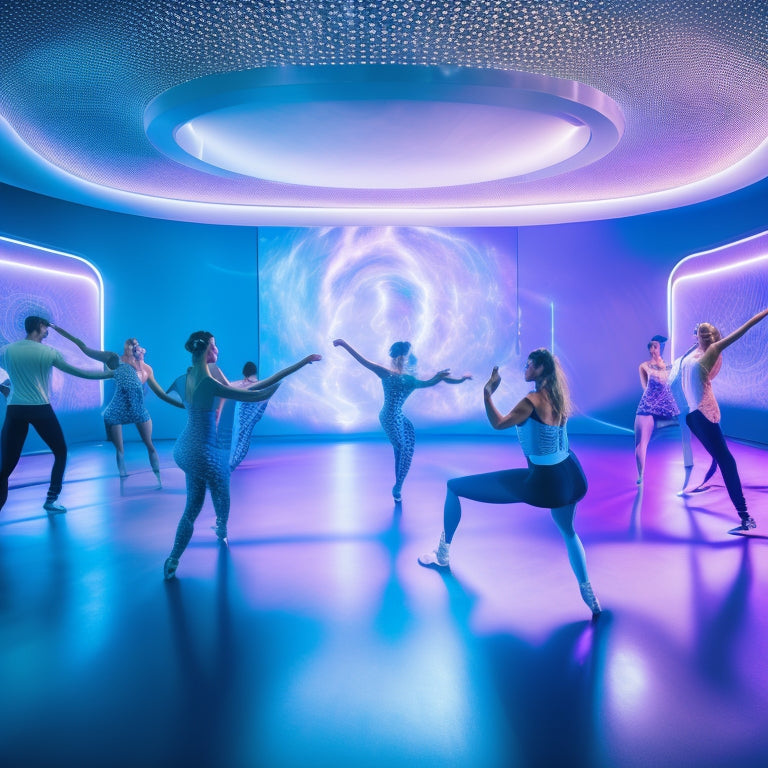
E-Learning Revolutionizes Traditional Dance Instruction
Share
E-learning is revolutionizing traditional dance instruction by providing unparalleled accessibility, cultural preservation, and personalized learning experiences that transcend geographical boundaries. This digital transformation enables dancers to learn at their own pace, fostering interactive engagement and expanding the reach of traditional dances to a broader audience globally. As the dance community adapts to this new landscape, it's essential to overcome technical hurdles and instructor resistance, ensuring seamless access to resources and effective communication. As we navigate this evolution, the possibilities for preserving cultural heritage and enhancing the learning experience become increasingly evident, and the future of dance instruction looks brighter than ever.
Key Takeaways
• E-learning tools enhance traditional dance instruction by providing interactive engagement and personalized learning at one's own pace.
• Digital platforms preserve cultural heritage by recording and sharing traditional dances, securing them for future generations.
• Effective integration of e-learning tools overcomes hurdles like technical issues and resistance to change, enhancing the learning experience.
• The hybrid approach combining in-person and e-learning tools expands the reach of traditional dance, making it globally accessible.
• E-learning in traditional dance instruction increases accessibility, fosters global connectivity, and allows for cultural preservation.
Embracing the Digital Dance Floor
With the traditional dance community increasingly recognizing the potential of e-learning tools, it is essential to explore the benefits of incorporating digital platforms into dance instruction, thereby initiating a new way we learn and teach traditional dance forms.
By leveraging e-learning tools, traditional dance instruction can foster interactive engagement, enabling students to learn at their own pace and revisit complex steps as needed.
This shift towards digital platforms also facilitates the preservation of cultural heritage, as traditional dances can be recorded and shared with global audiences, guaranteeing their continued relevance and appreciation.
As we commence on this digital journey, we can secure the continued cultural preservation of traditional dance forms for generations to come.
Overcoming E-Learning Hurdles
As traditional dance instruction begins the digital journey, it is important to acknowledge the challenges that may hinder the successful integration of e-learning tools. These challenges include technical issues, limited hands-on practice, and resistance to change.
To overcome these hurdles, it is essential to provide robust technical support, ensuring that learners can access resources seamlessly. Effective instructor communication is also crucial, as it fosters a sense of community and addresses learner concerns.
By prioritizing these aspects, e-learning platforms can mitigate the risks associated with digital dance instruction, ultimately enhancing the learning experience.
Traditional Dance Evolved
Traditional dance instruction has undergone a significant transformation, evolving from a largely in-person, instructors-led model to a hybrid approach that seamlessly integrates e-learning tools, thereby expanding its reach and enhancing the overall learning experience.
This evolution has enabled traditional dance to reach a broader audience, fostering global accessibility and cultural preservation. With e-learning, traditional dance can now transcend geographical boundaries, allowing learners to engage with cultural heritage from anywhere in the world.
Key benefits of this evolution include:
-
Increased accessibility: Traditional dance is now accessible to learners worldwide, promoting cultural exchange and understanding.
-
Cultural preservation: E-learning helps preserve traditional dance forms, ensuring their continuation for future generations.
-
Personalized learning: E-learning platforms can offer personalized learning paths, catering to individual learners' needs and preferences.
- Global connectivity: E-learning enables traditional dance communities to connect and collaborate, promoting a global dance network.
Frequently Asked Questions
Can I Learn Traditional Dance Styles Not Native to My Region?
Through online exploration, cultural immersion, and virtual travel, learners can explore dance anthropology, uncovering regional fusion styles, and accessing traditional dances from diverse regions, fostering a deeper understanding and appreciation of global cultural heritage.
Are E-Learning Platforms Accessible for Learners With Disabilities?
'Practice makes perfect' holds true for inclusive e-learning platforms. Ensuring accessibility for learners with disabilities is essential, adhering to Accessibility Standards and embracing Disability Inclusion, guaranteeing equal opportunities for all to master traditional dance styles.
How Do I Address Copyright Issues With Traditional Dance Materials?
When addressing copyright issues with traditional dance materials, promote fair use by following licensing agreements, obtaining necessary permissions, and providing proper attribution to original creators, thereby respecting intellectual property rights while promoting cultural preservation.
Can I Earn Certifications or Credits for Online Dance Courses?
"Earn recognized certifications and credits for online dance courses by ensuring alignment with Accreditation Standards, facilitating seamless Credit Transfers, and verifying institutionally-approved equivalencies, thereby bolstering professional credibility and academic recognition."
Are There Opportunities for Online Mentorship With Experienced Instructors?
'As dancers start on their digital journey, they can now find solace in virtual guidance, where experienced instructors offer personalized coaching, illuminating the path to mastery, one virtual step at a time.'
Related Posts
-

Elevate Your Dance Makeup Business Online
You're one step away from taking your dance makeup business global. A professional online presence is key, with 75% o...
-

Top New Balance Dance Shoes for Comfort and Performance
If you're on the hunt for top New Balance dance shoes that maximize comfort and performance, consider models like the...
-

Groove in Your Kitchen With Digital Download
With a digital download, you can instantly transform your kitchen into a vibrant space that reflects your personal st...


